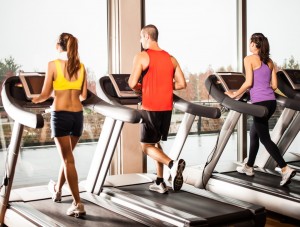 If you are like my son, and more of an indoors person then you might find that some indoor workouts are the way forward. You won’t be alone, the treadmill market is booming and becoming more and more popular. They are a great way of working out in your own safe home, with no one judging you while you enjoy your own music or watching TV. The downside of course is that you can’t blame bad weather for not working out!
If you are like my son, and more of an indoors person then you might find that some indoor workouts are the way forward. You won’t be alone, the treadmill market is booming and becoming more and more popular. They are a great way of working out in your own safe home, with no one judging you while you enjoy your own music or watching TV. The downside of course is that you can’t blame bad weather for not working out!
Treadmills are safe and nice to run on, much more comfortable than running on a hard concrete road. The soft belt and suspension built into the deck soaks up most of the impact, allowing you to glide along. Even the motor can keep moving you along faster than you would normally go when faced with the obstacles out doors, such as other runners and even worse wind!
So if you are new to treadmills, maybe moving at a walk our light jog, how do you become faster and get the most from your treadmill? Here are some easy tips to follow to get the most from your treadmill workout:
Treadmill Pacing
This is the first step, most people are tempted to push too hard on the treadmill when they start off. A brisk walk bordering a jog is about 4 MPH or 15 minutes a mile. Running is often considered as faster than 6 MPH or 10:00 minutes per mile. A good runner would be capable of running 3 miles in 20 minutes
Don’t be Rushed
At peak hours at the gym it can be hard to find enough time to run for long enough. Speak to your gym they will tell you when the quiet times are . Avoid the busy times and you will have your pick of treadmills.
Better yet buy one for your own home? Check out our guide to the best treadmills of 2015 here>>>
Warm up and Cool Down
Treadmills have been designed to limit injures, with their built in shock absorbers and cushioned tracks. You can still do your bit to prevent painful niggles coming in. The best way is to start slow every session and build up. Stretching before and after the workout will speed recovery and help prevent injuries.
Listen to your Heart
Your heart is the most important muscle that you will be exercising on the treadmill. If you listen to it then you can see huge increases in perfomance. The ideal training range is about 80-85% of your maximum heart rate. Higher than this and you risk over stressing the heart, any lower and you are not getting the most from your exercise.
Push Thought the Fat Burn Programs
Most treadmills have so called “Fat Burn” exercise programs. These tend to be easier than fitness programs. Guess what they also burn less calories than fitness programs. There is no “ideal” fat burn zone. Run faster for longer and you will burn more fat. Just
Handles are for emergencies!
If you run holding on to the handles then you will never improve your running style. Don’t run like one lady I saw, holding on like her life depended on her grip, while the machine was on full incline!
If you are running within your limits then you should never need the hand holds. Some of you might need to use them to take a pulse measurement. If you are doing this to often then consider investing in a chest strap?
Decipher the pacing info. How fast or slow are you going? Many treadmills show pace as miles-per-hour (MPH). Here’s a cheat sheet so you can find your minutes-per-mile pace, more commonly used by runners.
- 4.0 mph = 15:00 minutes per mile
- 4.5 mph = 13:20 minutes per mile
- 5.0 mph = 12:00 minutes per mile
- 5.5 mph = 10:55 minutes per mile
- 6.0 mph = 10:00 minutes per mile
- 6.5 mph = 9:14 minutes per mile
- 7.0 mph = 8:34 minutes per mile
Finally mix up your exercises! Run fast, with no incline, run slow on max incline. Long runs slow runs build endurance, Short fast runs power. If you look at any trainig program such as couch to 5k they encourage you to run 3-4 times a week. Sometimes on long runs (an hour or more) others short intervals.
Getting the right combination will build your speed and endurance and create a great runner over time.
 Optimum Fitness Fitness News and equipment reviews
Optimum Fitness Fitness News and equipment reviews